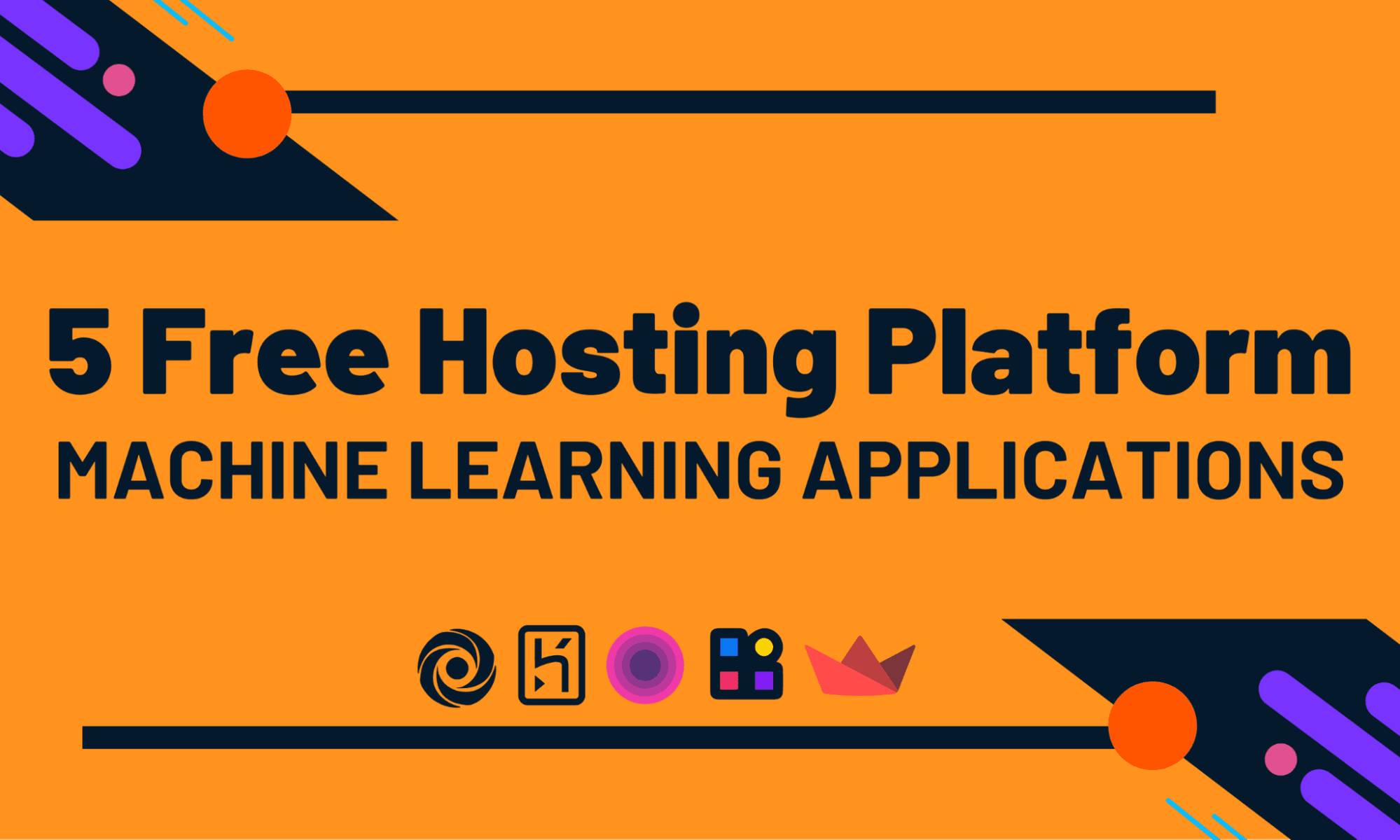5 Free Hosting Platform For Machine Learning Applications
Learn about the free and easy-to-deploy hosting platform for your machine learning projects.

Image by Author
After working on the machine learning project, it's time to showcase how well your model is performing. You can either create a front-end application or use REST API. With the introduction of Streamlit, Gradio, and FAST API, creating front-end applications has become hassle-free. These web frameworks require a few lines of code to create an interactive user interface. Sharing your work with the public helps you create a strong data science portfolio. It also helps non-technical individuals to understand your project. So, after building the web app, it is time to deploy the app to the cloud server.
In this blog, we will learn about the five best free hosting platforms for the machine learning demos. I will be sharing my experience on each platform and explaining why they are special.
1. Hugging Face Spaces
Spaces have become a new sensation in the machine learning community. I use this platform to deploy almost every machine learning demo. It has an easy-to-deploy option using Git and provides beginners friendly solutions for the environment and Python packages related issues. Spaces allows you to deploy Streamlit, Gradio, and HTML-based web applications. It is fast and reliable with longer server uptime. You don’t even have to upload the models or data. It provides seamless integration with Hugging Face Dataset and Models. Furthermore, Gradio allows us to save and update a flagging dataset using a callback, which is quite an exciting feature.
Spaces are community lead, machine learning demos sharing platforms. You can find web applications on computer vision, audio, natural language processing, tabular, and even simple dashboards. You can keep your application private or share it with the public. The best part about the platform is that it offers you so many features without any cost. Hugging Face is truly democratizing machine learning.
Gradio app on Spaces: Streaming Urdu Asr
2. Streamlit Cloud
Streamlit Cloud allows you to deploy one private and unlimited public Streamlit application for free. The platform offers a one-click deployment option using GitHub integration. In short, you will be pushing your code to the GitHub repository, and the Streamlit cloud will automatically detect changes and rebuild the server. Apart from it, you get to enjoy secure integration with the data sources, authentication, collaboration on the Streamlit project, and up to 1 GB of storage.
I love Streamlit Cloud because it is purely made for the Streamlit open-source web framework. With every new version, the platform is getting better in terms of speed, uptime, and accessibility. It is beginner-friendly and offers hassle-free deployment.
Streamlit app on Cloud: Traingenerator
3. Heroku
Heroku is a cloud platform for deploying all kinds of web applications. You can start small and then scale the project with time. Heroku supports the most popular programming languages, databases, and web frameworks. Furthermore, you can find tons of integrations for logging, email notifications, testing, dashboard, image processing, and DevOps.
My first experience with the hosting service was with Heroku, and I find it quite easy to modify and deploy the change to the server. You can deploy your app using GitHub integration, Heroku CLI, and Git remote. I stopped using it due to its storage limitations, but I still consider it one of the top hosting platforms for data applications. Easy to use and multiple integrations make it into my top three go-to platforms for web developments.
Deep learning Streamlit app on Heroku: dagshub-pc-app.herokuapp.com
Tutorial: Deploying a Streamlit WebApp to Heroku using DAGsHub
4. Deta
Deta is best for microservices. You get to deploy REST API or Node.JS applications with free storage and database. Deta provides you with its flavor of SQL database and large storage service. Other than that, you can also schedule runs, custom domains, and add API keys.
On my first experience with Deta, I was totally in love with the simplicity and powerful features provided by Deta CLI and server. I have even written a blog on it: Deploying Your First Machine Learning API. It took me 5 minutes to understand the docs, install CLI, and deploy my machine learning application. If you want to create your machine learning microservice and start your own company, then Deta is the best place to start.
FastAPI ML app on Deta: fastapimlproject.deta.dev/docs
5. Replit
Replit is a cloud-integrated developer environment (IDE) that provides free computing, storage, and hosting service for all kinds of projects. It is a community-driven platform where people (mostly students) share their projects related to games, web designing, building microservice, and even creating a new framework.
How does it help us build machine learning applications? In every project, you are allowed to run a temporary server and host your application with a public URL. For example, create a FastAPI machine learning application, and when you press the run button, it will automatically start a web server with a URL that you can share. You can keep the server on by using ping hacks or buy the Pro version.
Currently, I am running four reinforcement bots, three NLP chatbots, and one FastAPI project. You can create and deploy your app all at one place without even thinking about dependencies or development issues. It is my go-to platform to try new things and test APIs. If you are a coding beginner and want to get into the world of machine learning, then start with Replit.
App on Replit: DailoGPT-RickBot
Abid Ali Awan (@1abidaliawan) is a certified data scientist professional who loves building machine learning models. Currently, he is focusing on content creation and writing technical blogs on machine learning and data science technologies. Abid holds a Master's degree in Technology Management and a bachelor's degree in Telecommunication Engineering. His vision is to build an AI product using a graph neural network for students struggling with mental illness.
